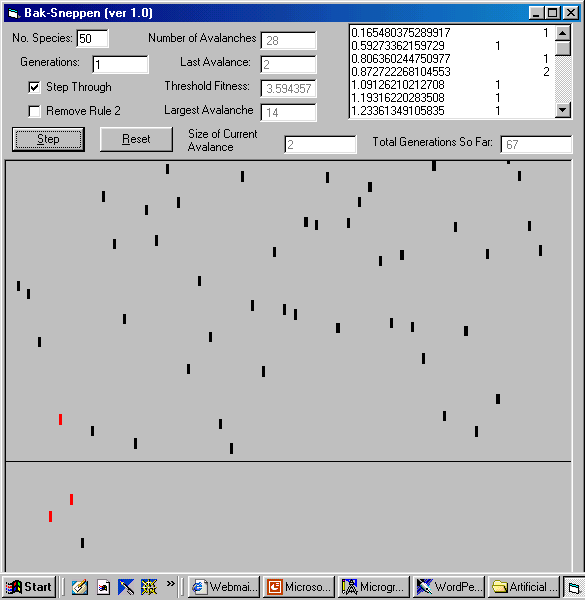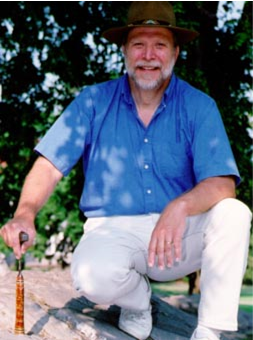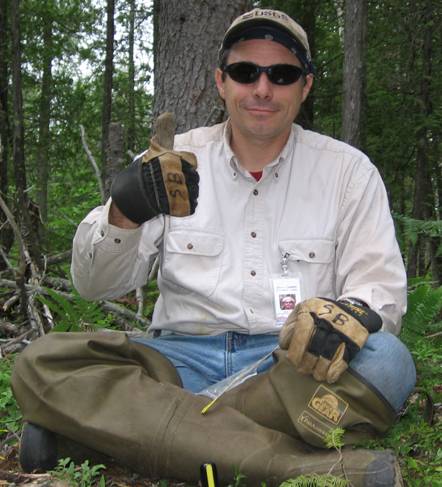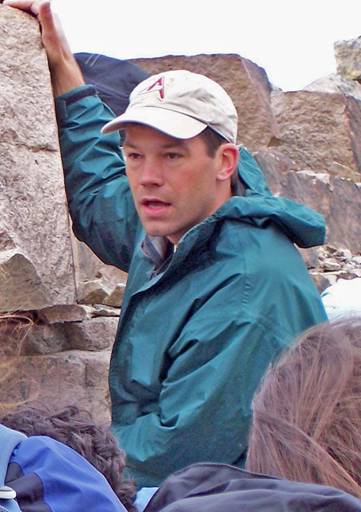James Madison University - Department of Geology & Environmental Science
Teaching Chaos and Complex Evolutionary Systems Theories at the Introductory Level
Model: Bak-Sneppen Ecosystem
Self-Organizing EvolutionStrategies and Rubrics for Teaching Chaos and Complex Systems Theories as Elaborating, Self-Organizing, and Fractionating Evolutionary Systems,
Fichter, Lynn S., Pyle, E.J., and Whitmeyer, S.J., 2010, Journal of Geoscience Education (in press)Description: Bak-Sneppen is an ecosystem used to model the co-evolution between interacting species following two simple rules. The technical paper is Bak and Sneppen (1993, reference here), but Bak also discusses it in his book “How Nature Works” (1996). An interactive computer model is here, and there is also an applet available (home page).
In the Bak-Sneppen ecosystem we create n species each with a fitness chosen at random between 0.0 and 1.0 (maximum fitness). When the model is running the fitness of each species changes because of its relationships with other species following two simple rules.
- Rule One: find the one species with the lowest fitness and randomly change its fitness.
- Rule Two: at the same time the lowest fit species is changed, also change the fitness—at random—of the species to the immediate left and right.
- Repeat next generation.
The Bak-Sneppen has a lot of subtleties. The Bak-Sneppen Help Files explore a lot of these.
Presentation: Here is a copy of the Bak-Sneppen model (screen capture below). There is also available a Power Point presentation that shows how we use the program, the kinds of questions we explore, and some of the universality property outcomes from Bak’s publications. There are many lessons to be gleaned from demonstrating the Bak-Sneppen model, and this is one of the models we consistently use in most classes.
From the self-organizing perspective, the important question is, “Can any organized outcome evolve when the initial state is set at random, and all fitness changes occur at random?” In fact, the system self-organizes via a punctuated equilibria strategy, and results in extinctions (any time the fitness of a species changes for what ever reason) that follow power-law distributions. The sweeping back and forth pattern of the avalanches is also fractal.
Anticipated Learning Outcome: - (in addition to self-organization and the universality properties); with an ecosystem/environmental systems bent:
- 18. In a complex system everything is connected with everything else. Nothing exists in isolation from the rest, sitting in a protected niche, independent and self-sufficient.
- 19. In a complex system no one can be completely safe, with complete control over their fate. Everyone has the potential to be an innocent victim since there is no way one can fully protect oneself from external actions.
Power Point - Bak-Sneppen Ecosystem
Bak-Sneppen Help File
Model of Bak-Sneppen Ecosystem
- Some computers also need this file Programs/Bak-Sneppen/MSVBVM60.DLL
 Lynn S. Fichter
Lynn S. Fichter
 Steve Baedke
Steve Baedke
 Eric Pyle
Eric Pyle
 Steve Whitmeyer
Steve Whitmeyer